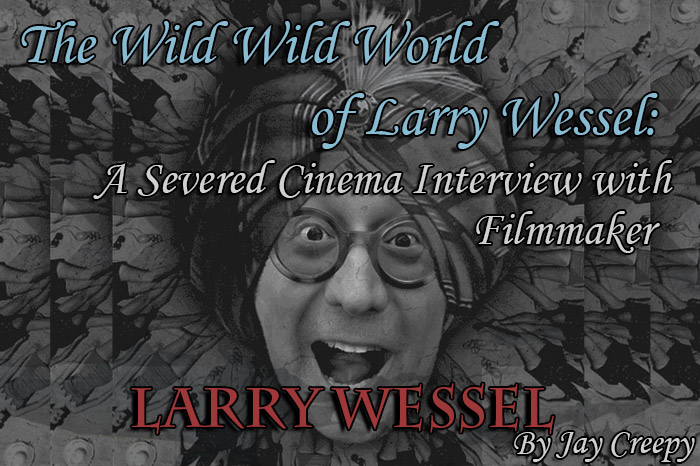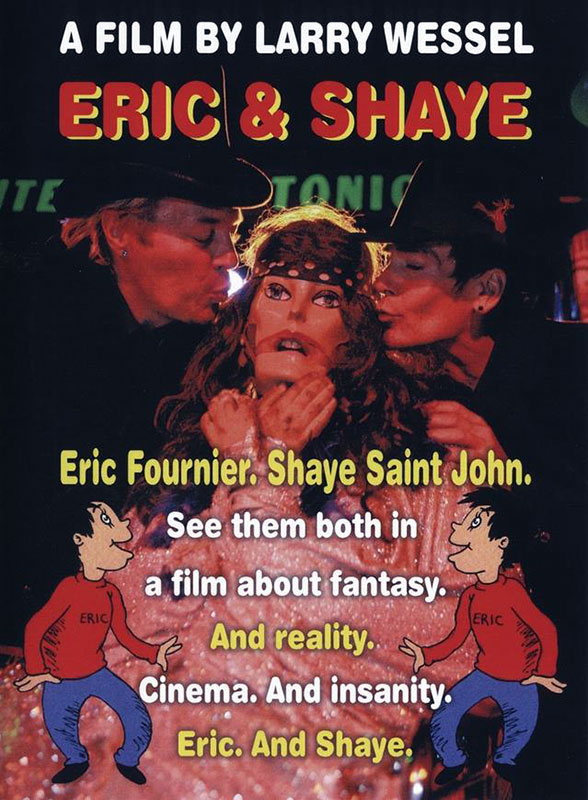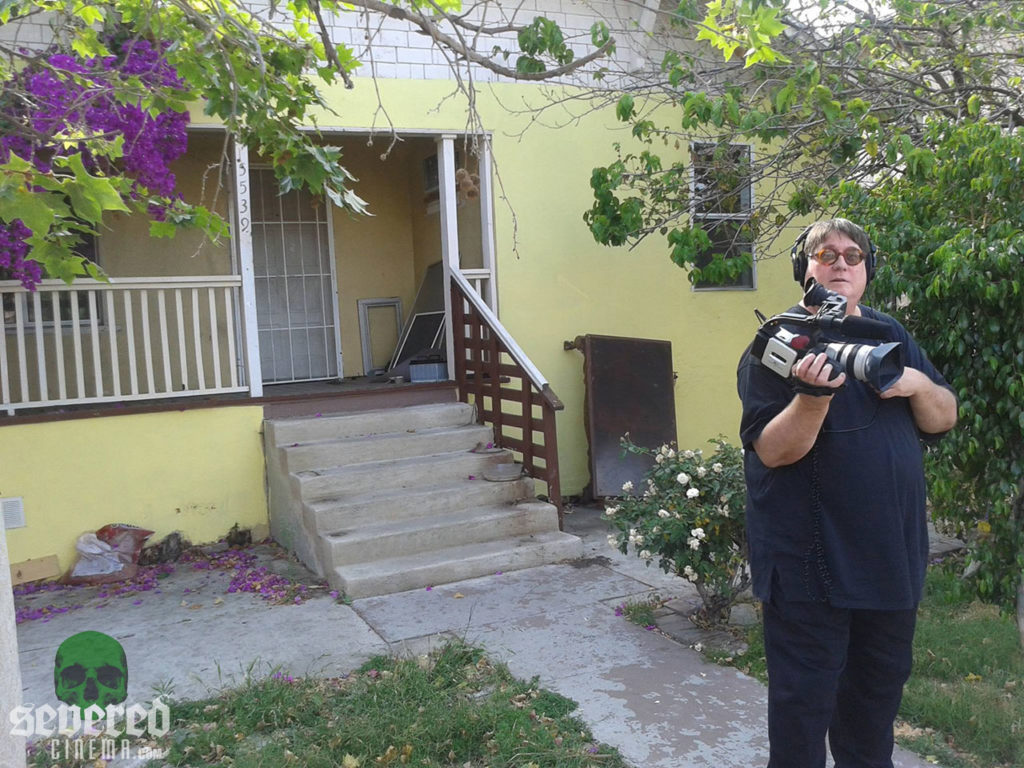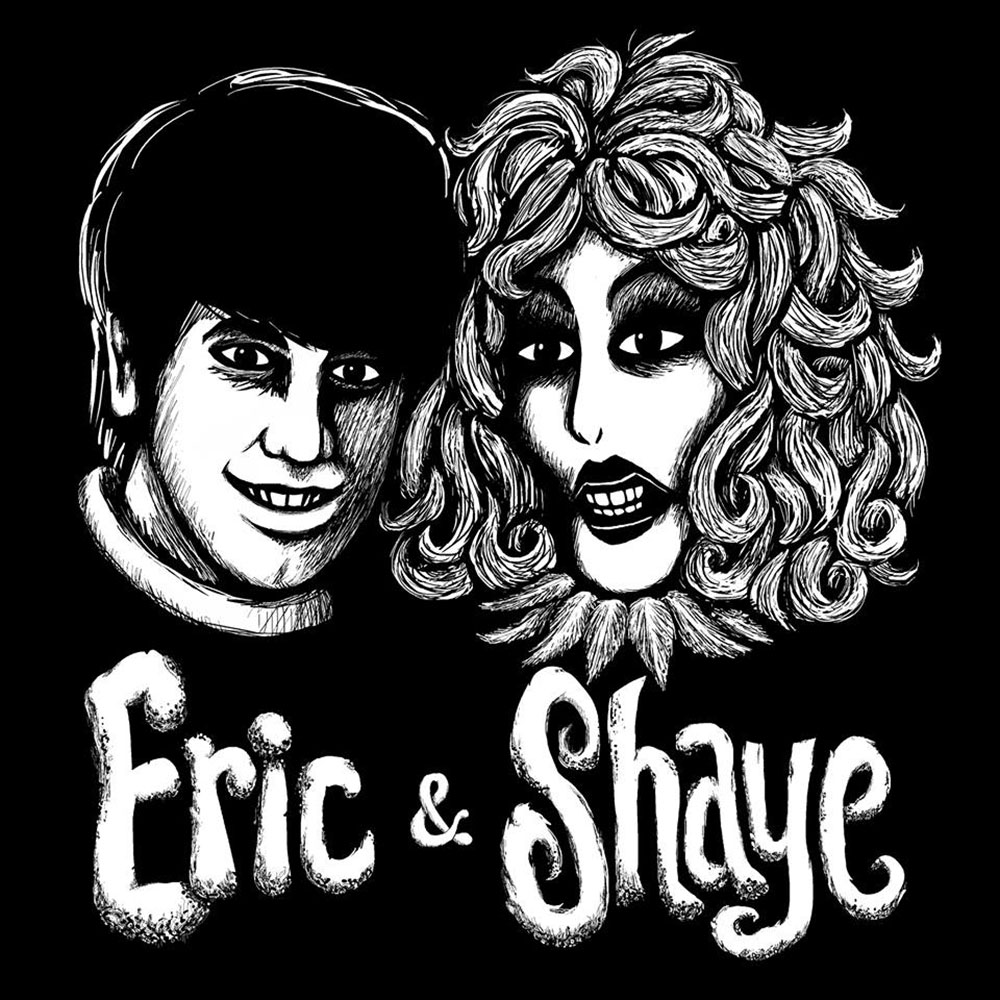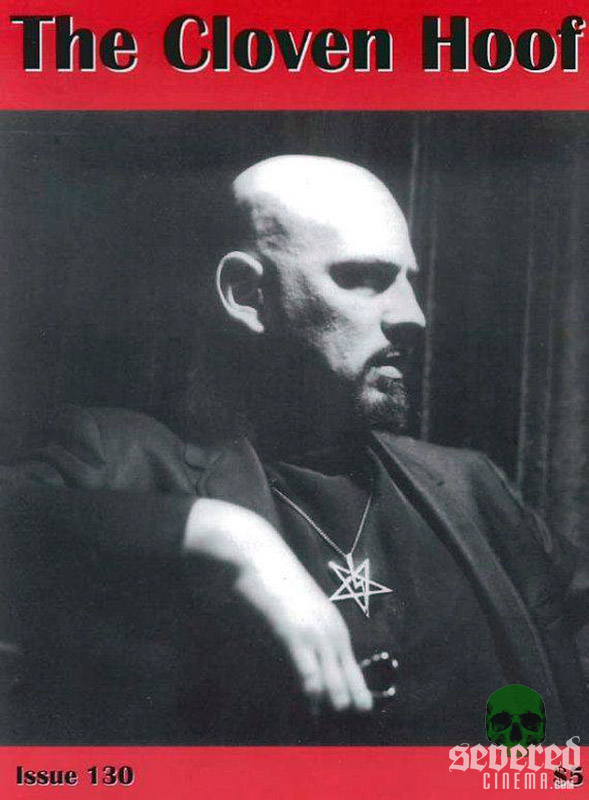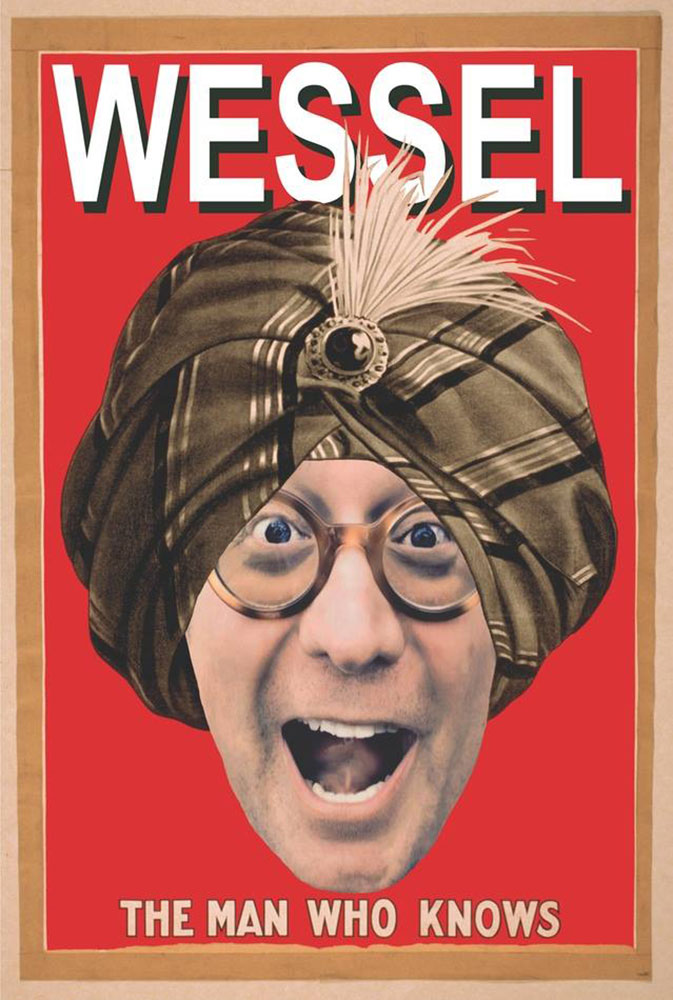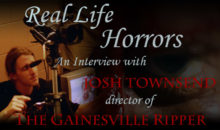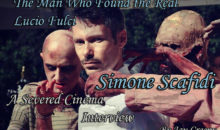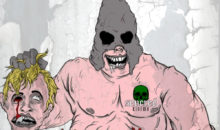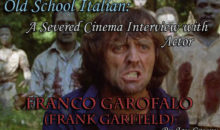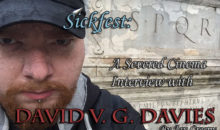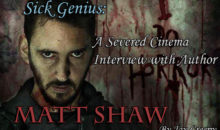The Wild Wild World of Larry Wessel: A Severed Cinema Interview!
Isn’t it funny how life throws surprises this way and that? Being a fan for many years of Eric Fournier and Shaye Saint John, I wrote a review in October 2014 (here) of the infamous underground DVD The Triggers Compilation. Soon afterwards, Larry Wessel, via our Severed Cinema boss, Chris, got in touch with me explaining he was putting a documentary together all about Eric Fournier. He asked if I wished to be part of it, I sent him a few things. We kept in touch, and some time later, out popped Eric & Shaye on DVD. To many, Larry’s creations will be rather alarming, but he has been around for many many years and he experiments and constructs some fantastic works (not just in films, he has his fingers in other juicy pies it seems). Larry Wessel isn’t dull. His realm of reality is so out of the average box. I had to interview him! What could I discover in my excursion in Wessel Jungles? Bull fighting, Satanism, art, music, transvestites, satanic whoopee cushions, and so much more. So let’s knock on the door — a door which is bulging, it’s throbbing as if it’s breathing, almost as if there’s so much going on behind it that it cannot be contained.
Now then, Mr. Wessel, I usually like to start interviews by working the victim — I mean, the guest — gradually with a hello and a thanks. This time, however, I must leap straight in if you don’t mind.
I don’t mind at all. Let’s go for it man!
You have as good as captured the mind and the works of underground legend, Eric Fournier, with your documentary, Eric & Shaye which has just come out. The style of the film is similar to Eric’s works in that it has a lot of random and chopping crashing about edited scenes which shouldn’t but somehow do work together. Please tell me what attracted you to Eric Fournier and Shaye Saint John’s world?
The Shaye Saint John Triggers cast their spell on me late one night approximately 16-years ago when I first experienced them on a tiny TV set perched above the bar at the CIA Club in North Hollywood. I had never seen anything like them before or since! They were all totally original and extremely beautiful and overwhelmed me to such a degree that I wanted to see them again and again.
My introduction happened around four or five years ago, I think, when me and a work colleague were surfing YouTube on a boring afternoon. We chanced upon Kitty Candy then carried on watching many more. He lost interest weeks later, I never lost my love, I researched deeper. Which Eric Fournier videos totally captivated you from the start?
Stumpwater Salad, Kitty Candy, Drawing With Shaye, Halloween Trash, Western Town, BALLOONGOON, Wire Therapy, Drip Drop Diet, Skin Tape, Hand Thing, Tubing, TWENTY4SEVEN and Haunted Garage Sale, to name but a few. I really do love them all. I have watched each and every one of them repeatedly over the course of many years and I am always discovering something new!
It was surely a long and gruelling task putting together the documentary and the subject is so underground that it lives somewhere near the Earth’s core. What were the highest and lowest points of the creation?
The highest points came during the final weeks of editing the film. I’ve found that this is usually always the case with the documentaries I make. This is when the film takes on a life of its own. This always gives me a god-like thrill, not unlike Dr. Frankenstein when he exclaims: “Look! It’s moving…it’s alive…IT’S ALIVE!” This is what makes creativity so addicting! The low point for me is when the Grim Reaper arrives.
Did you find yourself pulled into the mass of emotions coming from most of the people interviewed? Towards the end there was a feeling of upcoming doom knowing how Eric’s life ended. Of course you sat and worked with the uncut unedited footage of so many people.
Yes. But it was especially difficult for me to deal with Eric’s death. I knew that this was a very important and necessary aspect of his story but I saved it for last because in a way I became so close to Eric through working on this film that I didn’t want to see him die. It also brought back memories of my father, a good man who also fell into a bottle. My father was 76 when he passed away. Eric hit the bottle harder. Eric never made it to his 43rd Birthday. I think that his room mates, both Jim Faust and Dave Gardener, did an exemplary job of describing exactly what happened at the end of Eric Fournier’s short life.
It’s wonderful how so many hours of images and knowledge was shrunken to such a compelling piece of art. Speaking of the tossed aside footage, how hard was it to choose what went into the finished work (I’m not bitter about my interview being thrown down and kicked about on the cutting room floor… honest I ain’t bitter…)
When I begin editing a documentary I usually start with 200 to 300 hours of footage. I watch and listen to all of it and begin the process of keeping what I like and discarding what I don’t like. Fitting everything together like an enormous jigsaw puzzle. The strength of a story is everything to me. All the while I am looking for stories worth telling and stories that when combined with other stories become a part of the bigger story that I want to tell. This process takes a long time but is very rewarding when it finally all comes together. Jay Creepy talking about his love of The Triggers Compilation lost out to Tanner Toobach covering the same ground. I did need to include an Exploration of Eric’s Wonderful Website ShayeSaintJohn.net and I felt that the perfect tour guide for this would be Mr. Jay Creepy. Your sequence ended up being my Favorite part of Eric & Shaye. I see ShayeSaintJohn.net as being Eric Fournier’s Disneyland. To this day I have never seen a better website. I have spent years travelling through ShayeSaintJohn.net, this astonishing psycho-geography of Shaye Saint John’s Personality, an elaborate dark ride labyrinth of secret rooms and shocking surprises!
The website is an assault on all the senses. If you aren’t ready for it, or do not know the world of Shaye, it perhaps can cause premature hair loss. Your film is like a mellow version of the website. I felt as if I was watching a John Waters creation which made me feel warm inside. The particular variety of personalities and views were simply awesome. Where did it all come from? What drove you and how did you track down so many wonderful folks?
In 2012 I had made a short film about Shaye Saint John called Trigger Happy. The story was written and performed by Carl Crew. After completing this film and posting it on YouTube it was clear to me that Trigger Happy was more of a reflection of Carl Crew than it was of either Shaye Saint John or more importantly Eric Fournier. That is when I decided to dig deeper and do more research. I created a Facebook Fan Page for Eric & Shaye and began inviting all of the fans I found on the internet to press the “like” button on this page. I found Eric’s roommate Jim Faust on Facebook and soon after that I conducted my first interview with Jim. Mr. Faust introduced me to filmmaker Doug Waugh who created Shaye St. John’s Video House Tour. My Assistant Caroline Wilson had corresponded with Eric’s roommate, David Gardener, which resulted in my visit with Dave at Shaye’s “Compound.” Carl Crew introduced me to four people who Co-Star in Eric & Shaye — Darwin Flores, who collaborated on such Masterpieces as Kitty Candy and Fireworks. Daisy Janell Garcia who co-stars in Halloween Trash, Becca Fierro who describes her encounters with both Eric Fournier and Shaye Saint John and Robert “Corpsy” Rhine who interviewed Shaye Saint John at the CIA for Girls and Corpses Magazine. Caroline Wilson also introduced me to Artist Tony Chiodo who created the beautiful black and white artwork for the Eric & Shaye DVD disc and the t-shirt / flipside of the Postcard. She also introduced me to Aylöfft Olive who created the Shaye Saint John Mii and Narcissister, who reveals in Eric & Shaye the origins of Shaye’s plasti-personalities mask! All of the other co-stars who appear in Eric & Shaye, I found and corresponded with on the internet during my research.
Other than myself, how many of the stars have you kept in touch with?
Everyone except Carl Crew. I am no longer speaking with him.
Iconoclast!!! Whoa, what a blast! Larry, you have to go into this with me. Again, what drew you to the subject? In fact, tell me anything at all!! How long did it take? What emotions curdled around you? Please drop as much knowledge as possible.
In June of 2004 I received an email from Boyd Rice, he wrote, “What about making a documentary about ME?” I wrote back and told him that I would love to shoot a documentary about him. Boyd was a fan of Larry Wessel’s Taurobolium, my Tijuana bullfighting documentary, and I had previously filmed Boyd twice before. Once in 2000 in Boulder, Colorado for a documentary about collectors that I started shooting. I also shot a performance of Boyd Rice/NON with Death In June at The Key Club in West Hollywood March 25th, 2002. In this email that I received from Boyd he wrote that he was going to be returning to The Key Club to perform with Death in June on June 24, 2004 and he suggested that I interview Douglas P. because this was going to be the last tour that Boyd would be doing with Death in June. Douglas gave me a great interview! At his hotel room, donning his creepy Death In June mask, Douglas told me wild stories about his adventures on tour with Boyd all over Europe. Just before shooting their return engagement at The Key Club, a group of protesters showed up with picket signs that read, “STOP NAZI MUSIC” and “BOYD RICE IS A NAZI THROUGH AND THROUGH”. Boyd came out of the club and confronted the protesters and they didn’t even recognize the man they we’re protesting! Of course my video camera was rolling the whole time! This was the beginning of Iconoclast, and very typically the way I begin all of my documentaries, by just pushing the red record button on my video camera and letting it roll. I made several trips to Denver to videotape Boyd at home and at Tiki Boyd’s (his local watering hole that he designed and held court in). Boyd made several trips to Hollywood where he would stay with his friend and I would continue videotaping his story there. Besides all of the hours I spent interviewing Boyd, I interviewed over 40 of his friends and associates, travelling back and forth to Denver, Portland, Albuquerque, Las Vegas, San Francisco, Los Angeles, San Diego, and Lemon Grove. Friends of mine also chipped in and shot footage for Iconoclast in Sintra (Portugal), Belgium, Australia, London, and at the lecture Boyd gave at The Massachusetts Institute of Technology!! Of the forty plus people I filmed, thirty-six made the final cut! Besides Boyd, these people represent a virtual “who’s who” of our underground culture, including film directors, Ray Dennis Steckler and Allison Anders, artists Beth Moore-Love, Coop, Jeffrey Vallance and Johanna Went, DJ Rodney Bingenheimer, televangelist and exorcist, Bob Larson, musicians Robert Turman (NON), Z’EV, Douglas P. (Death In June), Rozz Williams (Christian Death), Don Bolles, (The Germs), Robert “El Vez” Lopez, Matt Skiba (Alkaline Trio), Gidget Gein (Marilyn Manson and The Spooky Kids), The Church of Satan’s Blanche Barton and Anton LaVey’s grandson, Stanton LaVey, co-editor and co-writer (with Boyd) of Incredibly Strange Films, Jim Morton, Feral House Publisher and writer, Adam Parfrey and even Boyd’s high school classmates and childhood friends! Iconoclast took approximately seven years to complete, having its world première in Los Angeles at Quentin Tarantino’s New Beverly Cinema in 2010. As far as I know, Mute Records still has plans for the release of a one and a half hour version of my Iconoclast. My original 3 hour 53 minute Iconoclast 3-Disc DVD Director’s Cut is not currently available. The information I provided you here about Iconoclast is from a great interview that Kent Adamson did with me back in 2011. (Here is the link if you want to read more.)
I didn’t realise you’d worked alongside the unforgettable and in-yer-face, Goddess Bunny before. What is it like sharing the world with such a wonderful person?
The Goddess Bunny a.k.a. La Morsa a.k.a. Sandie Crisp is Absolutely Fabulous! I first met her many years ago when she shared an apartment with Glen Meadmore. We hit it off immediately and I invited her to star in Sugar and Spice, my documentary that invites you to cross over the gender line into the fascinating world of drag queens, transexuals and transvestites!
Filmwise, where did it all begin? What was born the moment you used your very first camera?
My love for Cinema began at a very early age. My parents were both Cinefiles. Our religion was cinema, and our church was always the darkened interior of a movie theater! One magical evening, my parents took me to see Fantasia on the big screen, and the night on Bald Mountain sequence made a lasting impact on me! When I was eleven-years-old I purchased my first Super 8mm movie camera with money I made delivering newspapers on my Schwinn Stingray bicycle. I was heavily influenced by horror films at the time and began shooting my own scary films. The very first one was called The Black Glove, and depicted an old man being stalked by a knife wielding psychopath.
I’ve had a browse around your IMDb CV (here), you’re a blooming workhorse! You direct, you edit and you produce your works? Don’t you trust anybody else? Or do you prefer to feed and change your own babies?
I always produce, direct and edit my films. And yes, they are all my precious little duck babies! That being said, I am extremely grateful that Eric & Shaye is chock-full of talented writers, animators, artists, musicians, composers, photographers and filmmakers, all of whose creative contributions to Eric & Shaye are phenomenal. I could have never made this film without their enormous help!!
Okay, I was caught up by the fact you’re also credited as being a monster in the old Doug McClure starring thingy, Humanoids From the Deep. Is this real?
I wasn’t a monster per se. I actually played the role of a villager who clobbers an attacking Humanoid over the head with a four by four. And my exciting scene in this Roger Corman produced film made the final cut! There was a period of time when I did a lot of extra work and you can see close-ups of me also in Terry Gilliam’s Fear and Loathing in Las Vegas, Paul Thomas Anderson’s Magnolia and Quentin Tarantino’s Jackie Brown.
The Unpop Art movement? Please pretend I don’t know a thing about this (erm…) and explain all.
The Unpop Art Movement was founded in 2003 by Boyd Rice, Brian Clark and Shaun Partridge. It’s other members at the time included: Jim Goad, Adam Parfrey, Larry Wessel, Lorin Partridge, Nick Bougas, Beth Love, Gidget Gein and Charles Krafft. It has been described by Brian Clark, the movement’s “Minister of UnPropaganda” as follows: Unpop Art is any form of art, music, writing or film which has as its conceptual basis, the fusion of unpopular, offensive, disturbing or otherwise frowned-upon ideas with fun, yummy, pop-art sensibilities, aesthetics or techniques. It’s a modernization of the age-old alchemical concept of blending polar opposites; in this case, of combining unpleasant ideas with innocuous pop-culture fun. Good Unpop ArtT should, in theory, be upsetting and fun at the same time, and — like pop art or corporate advertising — ideally it should operate on a level of emotional immediacy that’s universally understood (most often via symbolism, but not always). At some point (I forgot when and I couldn’t really care less!) I was ex-communicated from this group. The only Unpop Artist I continue to communicate with is Charles Krafft on Facebook.
I’m quite stunned the group would remove you. Closed minds pretending to be otherwise? Who knows? Whilst this interview has been going, I am swept up by so many names whom have been in your life one way or another. I’ll throw two names your way. Can you catch the names, ball them up, unfold them, and pass them back with an explanation as to why they are in your life? Salvador Dali and Anton LaVey, eh, Father Larry?
Though I do appreciate and enjoy the paintings, films, writings, performances and one of a kind personality of Maestro Salvador Dali, I cannot say that there is a personal connection. I did however become friends with Anton Szandor LaVey. When he passed away I was asked by his girl, Friday Blanche Barton, to write a piece about him for The Church of Satan publication “The Cloven Hoof.”
Larry, is there a limit? Have you a point where you’ll lock and chain the door? I reckon I know the answer, because you have that deep soul passion and love of cinema so I cannot imagine something so weird and wild would arrive to you that would make you go, “Oh my word, no!”
Stanley Kubrick felt that one should always be suspicious of people who have, or crave, power. He famously said, “Never, ever go near power. Don’t become friends with anyone who has real power. It’s dangerous.” I greatly admire the work of investigative journalists who get way too close to power, and genuinely place their head on a chopping block. I would never do this. I leave it up to these brave souls to do it for me! Google the name Gary Webb or see the film Kill the Messenger to get an inkling of what I mean.
What’s a typical day in the life of Larry Wessel?
I spend the lion’s share of my time as a customer service agent talking on the telephone with attorneys and their assistants. When I am not doing that I am either working on my next film, promoting my current film, catching up on my reading, doing research or spending way too much time on Facebook!
Your world seems to have touched many, my friend you’ve seemed to have been around forever and been witnessed by so many via your art, your words and your films. What parts of modern culture do you feel have borrowed segments of your own culture?
The impact of my style can be seen everywhere from the advertising campaigns of Madison Avenue, to the proliferation of reality television.
Random question — DVD, VHS or Laser Disc?
DVD. The format one chooses to use to express themselves is really quite irrelevant. It is only a medium. An artist will always use whatever medium that is available to him. Did you know that Edvard Munch’s “The Scream” was painted on a piece of cardboard?
I truly didn’t know that. Let’s play a game here. I’m stranded after an apocalypse in a sewer. There’s enough battery left in a portable DVD player I’ve found. Meanwhile, I’ve chanced upon somebody’s complete collection of Larry Wessel creations. The sewer will flood in about three hours, I’ve got enough time to watch one, then plan my exit and survival. Which Larry Wessel disc should I choose that represents everything the man stood for and believed?
Larry Wessel’s Taurobolium.
Who is the real Larry Wessel? If I peel you back like an onion, is there yet another identical Larry Wessel onion underneath?
I am Wessel, the man who knows!
There’s so much more I could ask you. You are a very diverse and one of a kind gentleman. Maybe one day there’ll be a part II to this interview. Until then, thank you so much for taking the time to be, well, to be Larry Wessel.
Thank you for this great Interview!
Interview with Larry Wessel was conducted by Severed Cinema writer Jay Creepy. His works can be found at WesselMania.net.


